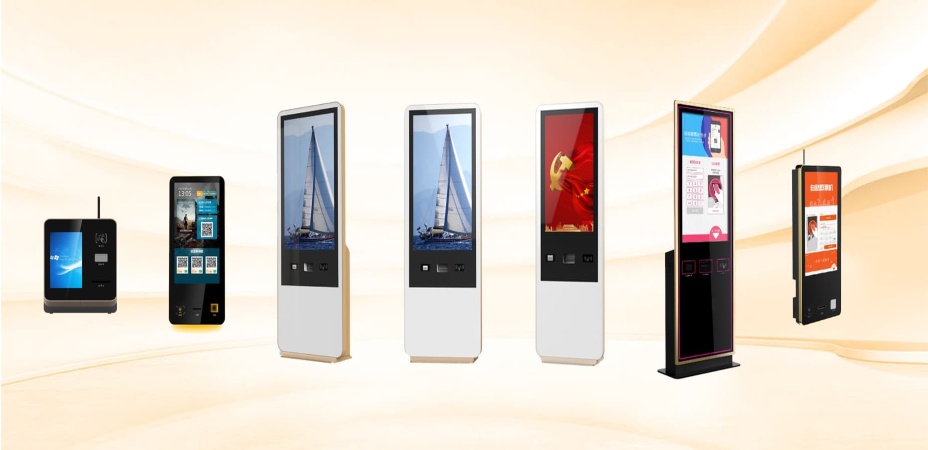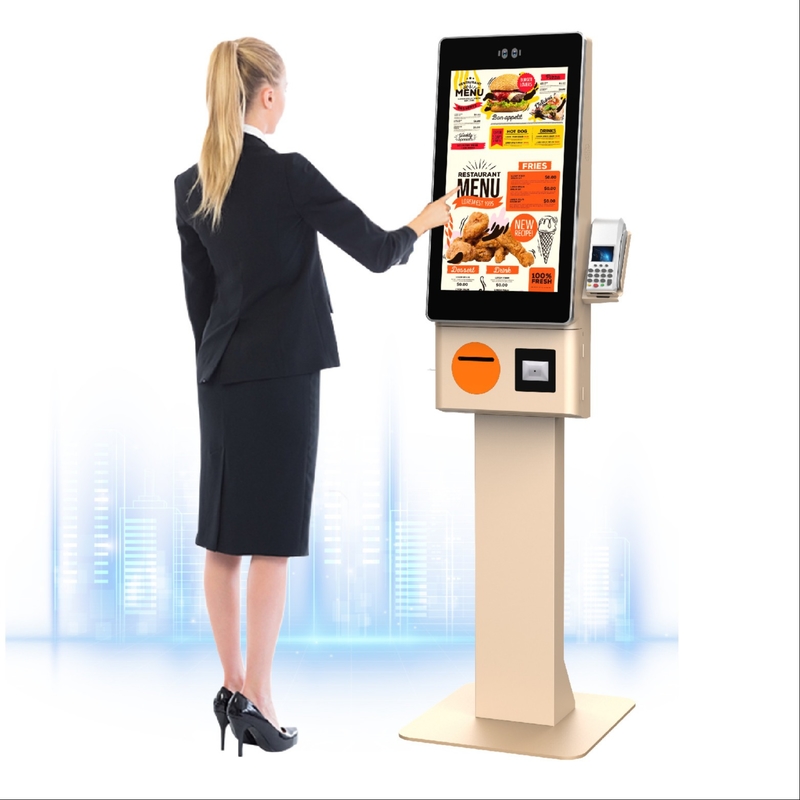Kiosk machine is rapidly becoming an integral part of various industries, offering automated solutions that streamline operations and enhance the customer experience. From self-checkout kiosks in retail stores to check-in kiosks in airports, these machines allow businesses to automate routine tasks while providing customers with convenience and speed. This article defines what a kiosk machine is, explores the various types, discusses how they work, and outlines the key benefits for businesses and consumers.
A kiosk machine is a self-service kiosk that allows users to perform specific tasks without the need for human assistance. These machines typically feature a touchscreen interface and are powered by advanced software that guides users through tasks like making payments, placing orders, or obtaining information. Modern kiosks are designed to support a wide variety of applications across different industries, making them a versatile solution for improving customer experience and operational efficiency.

When building a fully functional kiosk machine, in addition to the basics like the touchscreen, payment systems, software integration, and internet connectivity, several other critical hardware and software components are necessary. Below is a detailed breakdown of the essential elements that make up a robust kiosk machine:
1. TouchscreenThe touchscreen is the primary interface through which users interact with the kiosk. Modern kiosks are equipped with highly responsive touchscreens, often utilizing capacitive or infrared technology to offer fast, accurate responses and a smooth user experience. Multi-touch capabilities are frequently included, enabling intuitive interactions like pinch-to-zoom and swipe gestures. This allows for easier navigation, especially in more complex applications that require user input or selection from menus. | 2. Payment SystemsPayment systems integrated within kiosks allow users to securely complete financial transactions. These systems commonly feature credit card readers, NFC (Near Field Communication) payment options like Apple Pay and Google Pay, and cash acceptance modules. Additionally, modern kiosks often incorporate QR code payment scanning and mobile wallet solutions to accommodate the growing preference for contactless and mobile payments. Secure encryption and compliance with global standards such as PCI-DSS ensure that all payment transactions remain safe and protected. | 3. Software IntegrationThe software powering a kiosk is critical for delivering a seamless user experience and managing backend processes. This software typically connects with enterprise systems like content management systems (CMS), payment gateways, customer relationship management (CRM) platforms, and analytics tools. Custom software modules can be tailored to specific industries, such as retail, hospitality, or healthcare, allowing the kiosk to function as a dynamic solution for order placement, ticketing, patient check-in, or information dissemination. Furthermore, the software allows for real-time updates, remote monitoring, and performance analytics, ensuring operational efficiency and high uptime. |
4. Internet ConnectivityStable internet connectivity is essential for kiosk machines to operate efficiently. This connectivity enables real-time data synchronization, software updates, and remote diagnostics, ensuring smooth operation without manual intervention. Kiosks can be connected via Wi-Fi, Ethernet, or cellular networks (such as 4G or 5G), depending on the deployment environment. Reliable internet access is critical for tasks like processing payments, pulling real-time information from databases, or reporting usage statistics back to a central system. 5. Enclosures and DurabilityKiosk machines are often housed in durable enclosures designed to withstand frequent use and environmental challenges. For outdoor kiosks, these enclosures must be weatherproof, ensuring resistance to elements like rain, wind, and extreme temperatures. Enclosures are typically built from high-quality materials such as steel, aluminum, or impact-resistant plastic. Additionally, tamper-resistant features, anti-vandalism glass, and secure locks ensure the kiosk remains safe from misuse or damage in public spaces. 6. Thermal Printers and ScannersMany kiosks include thermal printers and scanners to support tasks like ticket printing, receipt generation, and document scanning. Thermal printers are known for their speed, reliability, and low maintenance, making them ideal for high-traffic environments. Scanners, including barcode and QR code readers, facilitate a variety of applications, such as scanning tickets, loyalty cards, or coupons, enhancing the kiosk's versatility across industries like retail, transportation, and healthcare. | 7. Audio and Accessibility FeaturesTo enhance user experience, particularly for individuals with disabilities, kiosk machines often incorporate audio guidance and accessibility features. Speakers or headphone jacks provide audible instructions, and ADA-compliant designs ensure that kiosks are usable by people with physical impairments. Other accessibility features may include Braille panels, adjustable screen height, or simplified interfaces for users with visual or motor impairments. 8. Cameras and Biometric SensorsCertain kiosks are equipped with cameras and biometric sensors to provide advanced user authentication or personalized services. For example, facial recognition cameras or fingerprint scanners can be used for secure user identification in sensitive applications, such as banking kiosks or healthcare check-ins. These features offer an additional layer of security while streamlining the user experience. 9. Cooling and Ventilation SystemsIn high-performance kiosks, especially those with demanding computing requirements, proper cooling and ventilation systems are necessary to prevent overheating. Fans, heat sinks, and ventilation grids help dissipate heat, ensuring the internal components of the kiosk function optimally and reducing the risk of downtime due to thermal issues. |
A comprehensive kiosk machine consists of more than just the basic components. By including advanced features like biometric sensors, thermal printers, and accessibility options, businesses can deliver an efficient and user-friendly experience. Each component—from the touchscreen to software integration and secure payment systems—works together to create a seamless interaction for the user, while ensuring that businesses can optimize their operations through automation and data collection.

1. Self-Service Kiosk
2. Information Kiosk
| 3. Payment Kiosk
4. Ticketing Kiosk
| 5. Healthcare Kiosk
6. Vending Machine Kiosk
| 7. Interactive Kiosk
8. Wayfinding Kiosk
|
9. Virtual Reality (VR) Kiosk
10. Digital Signage Kiosk
| 11. Customer Feedback Kiosk
12. Self Ordering Kiosk
| 13. Loyalty Program Kiosk
14. Biometric Kiosk
| 15. Event Registration Kiosk
16. Smart Kiosk
|
The variety of kiosk types reflects the diverse needs of modern consumers and businesses. Each kiosk serves specific functions across industries, enhancing customer experiences and operational efficiencies. As technology evolves, kiosks will continue to adapt, integrating new features that meet the demands of an increasingly digital world.

A kiosk machine operates through a combination of hardware and software components, creating a seamless user experience. Here's how:
1. User Interface (UI):The user interacts with the kiosk through a touchscreen, which displays a simple and intuitive interface. Kiosks are often designed to cater to various customer needs, supporting features like multilingual support, accessibility for disabled users, and easy navigation. | 2. Transaction Processing:For kiosks handling payments, the transaction process is simple yet secure. Kiosks typically support multiple payment methods, including credit cards, mobile payments, and cash. Secure encryption and compliance with PCI DSS (Payment Card Industry Data Security Standard) ensure that all transactions are safe. |
3. Software and Backend Systems:The software behind a kiosk controls everything from content display to transaction management. It connects to a business's back-end system to pull real-time data, track user activity, and ensure smooth operation. Modern kiosks can be remotely monitored and updated, reducing maintenance overhead. | 4. Internet Connectivity:To function efficiently, kiosks need constant connectivity, whether through wired internet connections or mobile networks like 4G and 5G. This connectivity allows for real-time data updates, remote diagnostics, and system maintenance. |
Reduced Labor Costs: By automating routine tasks such as checkouts, order placements, and ticketing, kiosks help businesses reduce staffing requirements, resulting in significant cost savings over time.
Increased Efficiency: Kiosks streamline transactions and tasks, leading to shorter wait times and faster service. This increases throughput, allowing businesses to serve more customers in less time.
Improved Customer Experience: Offering self-service kiosks can greatly enhance the overall customer experience. Customers enjoy the freedom of completing tasks at their own pace without having to wait for assistance.
Data Collection: Kiosks can collect valuable customer data, such as purchase habits and preferences, which can be used to tailor services and products, driving personalized marketing and operational efficiency.
Convenience: Kiosks offer a convenient way for customers to complete tasks like placing orders, making payments, or finding information without needing staff assistance.
Speed: Kiosks minimize wait times by allowing customers to complete transactions quickly, particularly during peak hours.
Personalization: Many kiosks offer features that allow customers to personalize their experience, such as selecting their language, customizing orders, or inputting specific preferences.

Kiosk machines are utilized across a wide range of industries to enhance customer service and streamline operations. Here are some key examples:
1. Retail:Retail kiosks are commonly used for self-checkouts, allowing customers to scan and pay for their items without the need for a cashier. 2. Healthcare:Patient check-in kiosks reduce wait times in hospitals and clinics by allowing patients to register upon arrival. 3. Hospitality:Check-in kiosks in hotels and airports improve the guest experience by enabling self-service check-ins and room key distribution. | 4. Entertainment:Cinemas and event venues often deploy ticketing kiosks, allowing customers to purchase and print tickets independently. 5. Public Services:Information kiosks in government offices and public spaces provide essential services like forms, schedules, and maps to citizens. 6. Food and Beverage:Fast-food and quick-service restaurants increasingly rely on self-service kiosks for order placements, improving order accuracy and reducing lines. |
Choosing the right kiosk machine for your business involves careful consideration of several factors:
1. Use Case:Define the tasks the kiosk will perform, such as payments, ticketing, or order placements. Consider who will use the kiosk and what kind of environment it will operate in. 2. Customization Options:Explore branding possibilities, such as integrating logos, colors, and themes into the kiosk design. Additionally, ensure that the software can be tailored to offer a personalized experience, like language options and accessibility features. | 3. Budget:While basic kiosks may offer limited functionality, advanced models can support a wide range of features, including payment processing and data analytics. Consider the total cost of ownership, including installation, maintenance, and software updates. 4. Maintenance and Support:Ensure that the kiosk provider offers ongoing technical support and regular maintenance. A reliable support system ensures that your kiosk remains operational and secure. |
Kiosk machines are an increasingly essential tool for businesses looking to streamline operations, reduce costs, and improve customer satisfaction. By understanding the various types of kiosks, how they work, and their benefits, businesses can make informed decisions on choosing the right kiosk to meet their specific needs. From retail to healthcare and hospitality, kiosks offer versatile solutions that drive efficiency and convenience.